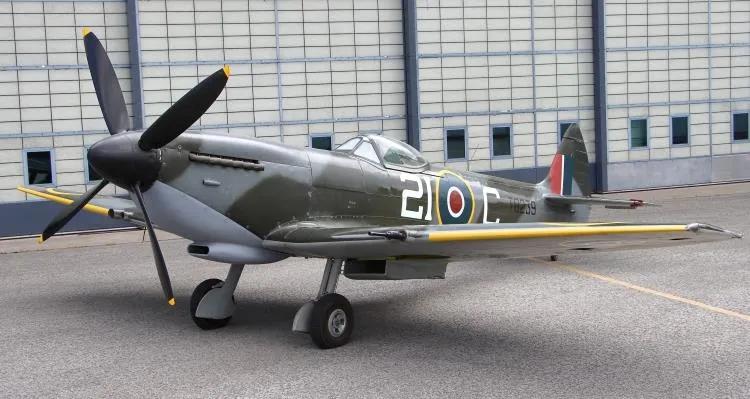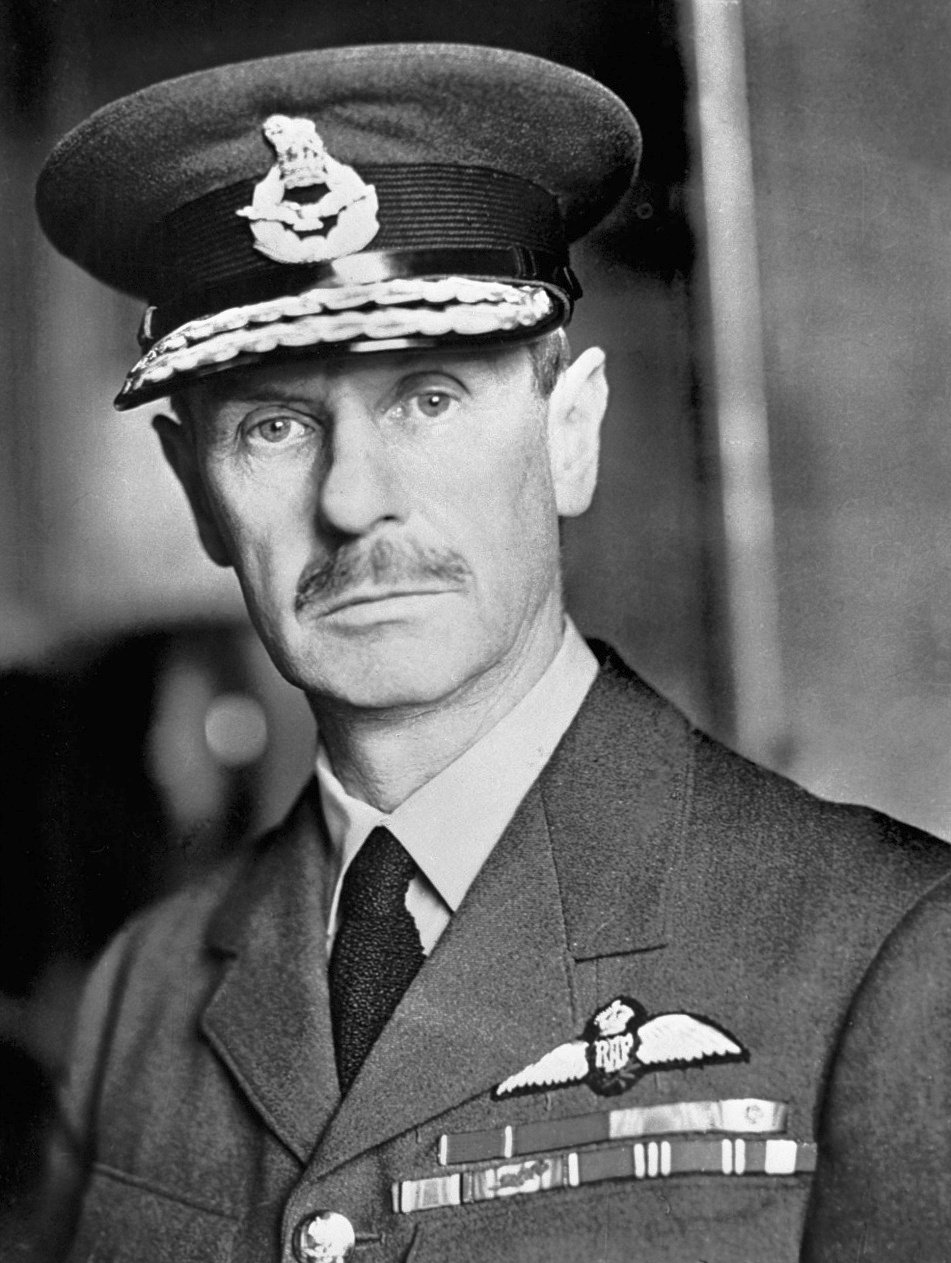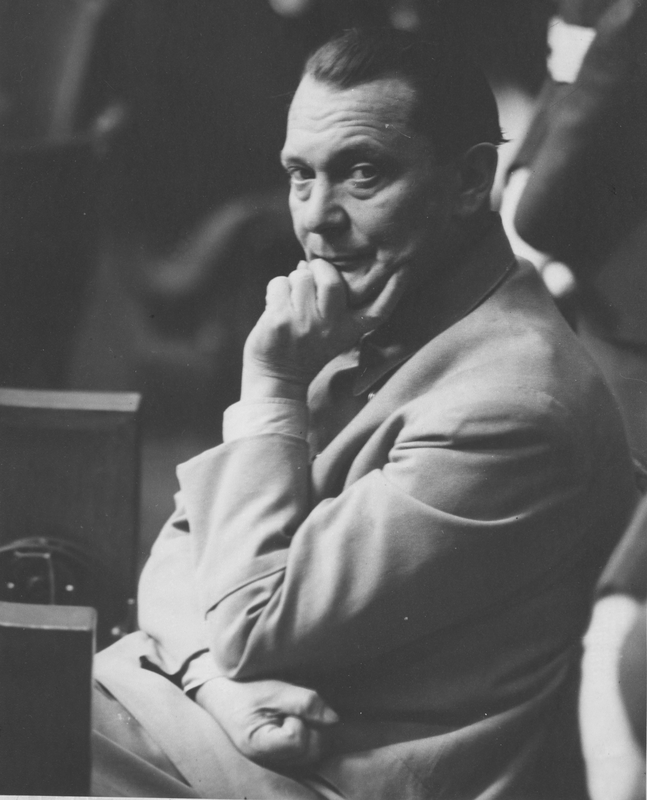Smith, Denis Norman Evelyn (Pilot Officer)
Killed in Action 1940-August-11


Birth Date: 1916-June-10
Born:
Parents:
Spouse:
Home: Vancouver, British Columbia
Enlistment:
Enlistment Date: unkown date
Service
RAFVR
Unit
74 Sqn- Squadron (RAF)
I Fear No Man
Base
Rank
Pilot Officer
Position
Pilot
Service Numbers
79524
Crew or Other Personnel
Spitfire R6962
Spitfire serial: R6962

The Supermarine Spitfire is a British single-seat fighter aircraft that was used by the Royal Air Force and other Allied countries before, during, and after World War II. Many variants of the Spitfire were built, using several wing configurations, and it was produced in greater numbers than any other British aircraft. It was also the only British fighter produced continuously throughout the war. The Spitfire continues to be popular among enthusiasts; around 70 remain airworthy, and many more are static exhibits in aviation museums throughout the world.
The Spitfire was designed as a short-range, high-performance interceptor aircraft by R. J. Mitchell, chief designer at Supermarine Aviation Works, which operated as a subsidiary of Vickers-Armstrong from 1928. Mitchell pushed the Spitfire's distinctive elliptical wing with cutting-edge sunken rivets (designed by Beverley Shenstone) to have the thinnest possible cross-section, helping give the aircraft a higher top speed than several contemporary fighters, including the Hawker Hurricane.
The Spitfire had detachable wing tips which were secured by two mounting points at the end of each main wing assembly. When the Spitfire took on a role as a high-altitude fighter (Marks VI and VII and some early Mk VIIIs), the standard wing tips were replaced by extended, "pointed" tips which increased the wingspan from 36 ft 10 in (11.23 m) to 40 ft 2 in (12.24 m). The other wing-tip variation, used by several Spitfire variants, was the "clipped" wing; the standard wing tips were replaced by wooden fairings which reduced the span by 3 ft 6 in (1.07 m). The wing tips used spruce formers for most of the internal structure with a light alloy skin attached using brass screws.
Due to a shortage of Brownings, which had been selected as the new standard rifle calibre machine gun for the RAF in 1934, early Spitfires were fitted with only four guns, with the other four fitted later. Early tests showed that, while the guns worked perfectly on the ground and at low altitudes, they tended to freeze at high altitude, especially the outer wing guns, because the RAF's Brownings had been modified to fire from an open bolt. While this prevented overheating of the cordite used in British ammunition, it allowed cold air to flow through the barrel unhindered. Supermarine did not fix the problem until October 1938, when they added hot air ducts from the rear of the wing-mounted radiators to the guns, and bulkheads around the gunbays to trap the hot air in the wing. Red fabric patches were doped over the gun ports to protect the guns from cold, dirt, and moisture until they were fired.
The first Rolls-Royce Griffon-engined Mk XII flew in August 1942, and first flew operationally with 41 Squadron in April 1943. This mark could nudge 400 mph (640 km/h) in level flight and climb to an altitude of 33,000 ft (10,000 m) in under nine minutes. As American fighters took over the long-range escorting of USAAF daylight bombing raids, the Griffon-engined Spitfires progressively took up the tactical air superiority role, and played a major role in intercepting V-1 flying bombs, while the Merlin-engined variants (mainly the Mk IX and the Packard-engined Mk XVI) were adapted to the fighter-bomber role. Although the later Griffon-engined marks lost some of the favourable handling characteristics of their Merlin-powered predecessors, they could still outmanoeuvre their main German foes and other, later American and British-designed fighters.Wikipedia
![]() Wikipedia Supermarine Spitfire
Wikipedia Supermarine Spitfire
Supplemental Story
Battle of Britain (Only Air to Air Combat, No Land or Sea Battles)
The Battle of Britain was unusual. It was an all air battle. Aircraft only, no navies nor armies. The entire battle took place in the air, over South Esat England and the English Channel. For Britain, the two primary aircraft used were the Hurricane and Spitfire. Other aircraft such as the Bolton-Paul Defiant and the Fairey Battle were soon shown to be inadequate and withdrawn from the battle. Many Fairey Battle aircraft were shipped to Canada for training new airmen.
Two Very Different Commanders
-
 Lord Hugh Dowding - Air Chief Marshall RAF Fighter Command
Lord Hugh Dowding - Air Chief Marshall RAF Fighter CommandLord Hugh Dowding - Air Chief Marshall, RAF Fighter Command. Dowding was a humble man, who ignored Churchill's order to maintain an airforce in France, but rather had concluded that Britain had scarce air resources, and defence of Britain was paramount. He would not risk losing aircraft in France - history proves him correct. It was Dowding's humble and analystic approach that saved Britain. He invested heavily in radar (new technology) and ground observer stations, so that the RAF could track the incoming fighters and bombers. He deployed aircraft sparingly and strategically. He also discounted the exhuberant claims of his men on their air success. He chose to believe a lesser estimate of their claims. He was careful and shrewd in his deployment of aircraft.
Lord Dowding's name is chiselled into the wall at the Battle of Britain memorial in Wetminster Abbey in London - a fitting tribute to a humble and determibed man.
-
 International Military Tribunal Nuremberg.
International Military Tribunal Nuremberg.Hermann Goering - commander-in-chief of the Luftwaffe (air force). Goering was the opposite of Lord Dowding. He was a brash, bigger than life character, who absolutely expected to win, and believed it would be easy. When his flyers made exaggerated claims of victory, it was exactly what he wanted to hear, and he believed it all. Goering did not stick to his strategy, and when they were winning by targetting airfields and radar, he was easily swayed to change startegy, ultimatley leading to the Luftwaffe losing the Battle of Britain.
Pictured at right: Defendant Hermann Goering in the prisoners' dock at the International Military Tribunal trial of war criminals at Nuremberg. Goering was the former head of the Luftwaffe and was at one time second in command to Hitler.
Turning Point - Sunday August 25 1940
The Accidental Bombing of London:
To get to 11 Group's sector airfields - ringed round London - Kesselring often routed one raid direct and another along the great blind spot created by the Thames Estuary. In the small hours of Sunday 25 August a night raid used the Estuary route to the oil tanks at Thameshaven. The crew of one aircraft lost their way, continued too far westwards, and dropped their bombs. They hit the City of London. The raid caused more dismay among the British War Cabinet and the staff of Air Fleet 2 than among the Londoners. The outer suburbs had already been bombed and Londoners had been expecting raids. The bomb-load of just one errant bomber was a gentle introduction to total war.
Just as the Rotterdam bombing prompted the 15 May War Cabinet to send the RAF to bomb the Ruhr next day, so now did Churchill authorize an immediate reprisal raid upon Berlin. During this period RAF Bomber Command believed themselves to be reducing the scale of German air attack by bombing aircraft assembly plants. Now eighty-one RAF bombers departed for Berlin on the night of Sunday 25 August. More civilians died. Here bombs were unexpected: the Nazi leaders had promised that Berlin was inviolable. They vowed to avenge the 'atrocities'. So began a chain of incidents that eventually ended not only the Battle of Britain, but - at Hiroshima - the war. Excerpt from "Fighter" by Len Deighton
Reprisal:
Outcome:
The alternate bombing of Berlin and London, caused The German Luftwaffe to change strategy. They had been successfully destroying British air fields and radar installations. The Luftwaffer strategy was starting to take a significant toll on RAF Fighter Command operations. But now with the switch to bombing London and letting fighter command rebuild its infrastructure, the tide was turing, and RAF Fighter Command would ultimately be victorious.
Blitz and Counter-Blitz
On 24 August 1940 the first German bombs fell in central London; several had already fallen in suburban areas. On the following night, 25/26 August, more than eighty British bombers struck, for the first time, at Berlin. There were few casualties on either side, but a deadly confrontation had begun.
The next German air raid on London was by day on 26 August. Learning of a British bombing raid on Leipzig that same day, Churchill wrote to Sinclair [Minister of Air War]: "Now that they have begun to molest the capital, I want you to hit them hard, and Berlin is the place to hit them." While London was being pounded almost every night by German bombers, these smaller raids against Berlin helped raise British morale. International Churchill Society
![]() How Battle of Britain Won? (animated)
How Battle of Britain Won? (animated)
![]() The Man Who Saved Britain (Air Chief Marshal Hugh Caswall Tremenheere Dowding)
The Man Who Saved Britain (Air Chief Marshal Hugh Caswall Tremenheere Dowding)
![]() Thirteen Hours that Saved Britain (Black Thursday)
Thirteen Hours that Saved Britain (Black Thursday)
![]() Lord Beaverbrook (Minister of Aircraft Production)
Lord Beaverbrook (Minister of Aircraft Production)
"Never in the field of human conflict was so much owed by so many to so few", referring to the ongoing efforts of the Royal Air Force crews who were at the time fighting the Battle of Britain, the pivotal air battle with the German Luftwaffe, with Britain expecting an invasion. Pilots who fought in the battle have been known as The Few ever since; at times being specially commemorated on 15 September, "Battle of Britain Day". Wikipedia
![]() Never was so much owed by so many to so few - Winston Churchill Speeches (3:19)
Never was so much owed by so many to so few - Winston Churchill Speeches (3:19)
Aircraft
Questions for the Battle of Britain
- When was the Battle of Britain fought?
- What was Hitler’s goal in launching the Battle?
- Battle of Britain specifics:
- Where was the Battle of Britain fought ?
- What aircraft were used by the British in the Battle?
- Explain what each of the British aircraft was used for in the Battle.
- List the aircraft the Nazis used and what each one was used for.
- Overall was the Battle of Britain was mainly a battle of the navies, armies or air force? Explain your answer.
- What was the Blitz?
- Damage and Consequence
- Name three cities that were badly damaged in the Battle.
- What kind of damage was done to the cities of Britain?
- Why did Hitler decide to stop the bombing of Britain?
- Leadership
- Name two leaders in Great Britain who helped get the country through the Battle of Britain.
- What important role did each of those leaders have in the Battle?
- Imagine you were a child in London during the worst part of the Blitz. Write a short story about what you and your family did to protect themselves, what you thought about at night and a few of the things you saw and heard.
- Why were the shipping lanes of the North Atlantic Ocean so important during this Battle?
- If you had been a leader of the UK during this Battle, what four things would you have done to ensure the country would have won?
- If the Nazis had succeeded in winning this Battle and Britain had surrendered, what do you think the Nazis would have done? Suggest at least three things. Include your reasoning.
- If the UK had surrendered to the Nazis, how do you think this would have affected Canada?
- Winston Churchill Speech:
- Who was Churchill speaking to?
- Who is the Fuhrer?
- Who are the "many"?
- Who are the "few"?
- From your studies are there any other Winston Churchill speeches that are significant?